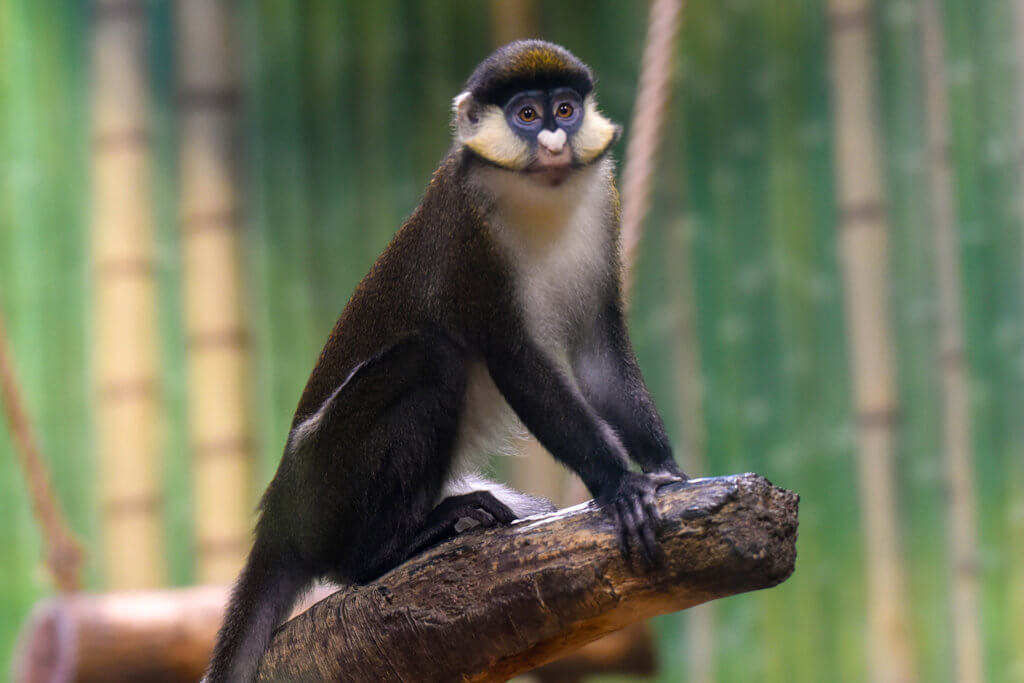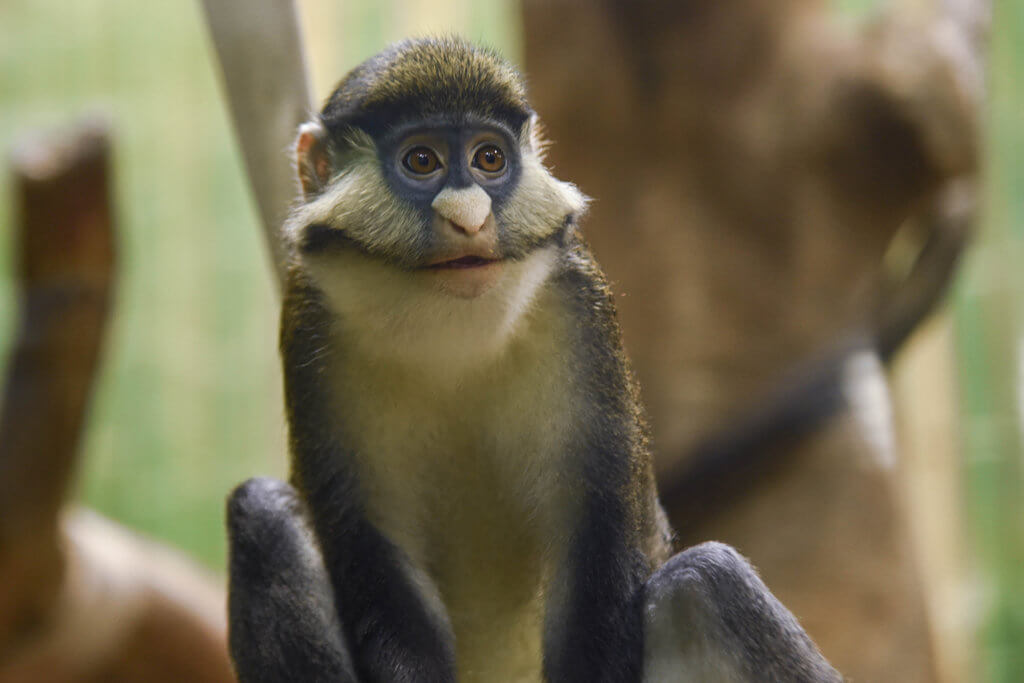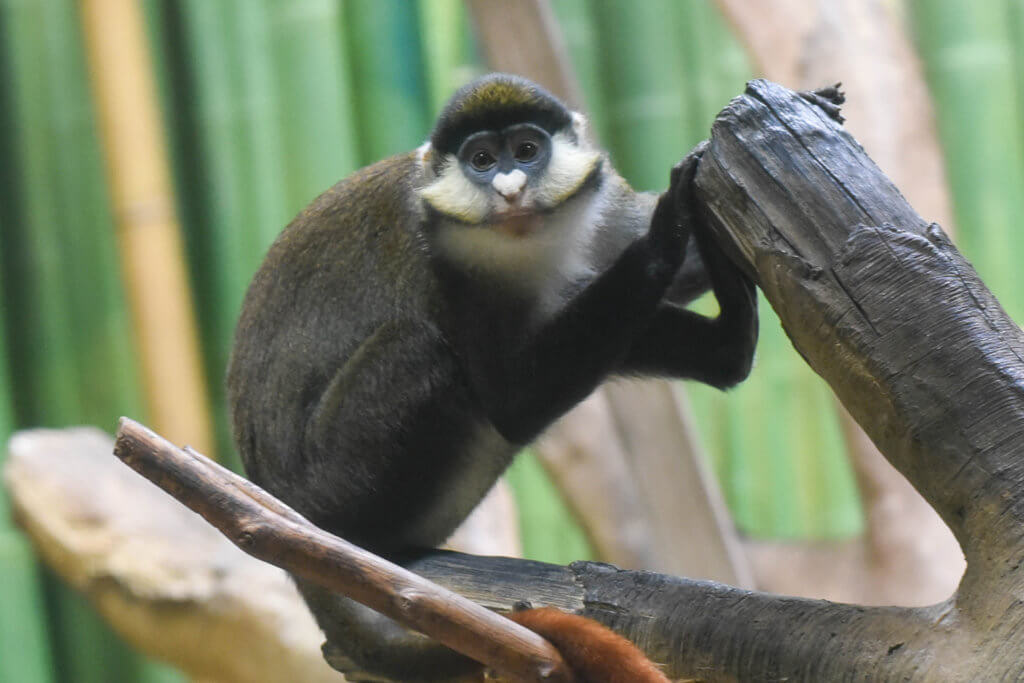Overview
“Where I live”
Red-tailed guenons live in the tropical forests of east-central Africa.
“How I live there”
Red-tailed guenons are exceptionally fast, active, and vocal monkeys. Throughout the day, they call to each other with quiet bird-like chirps and twitters. When alarmed, the male in the group makes an explosive warning cough and will continue to make staccato chirps until the threat is gone.
Red-tailed guenons live in family groups composed of one adult male and several females and juveniles. The group feeds together during the day and sleeps together in one or two neighboring trees at night. Solitary males are usually transitioning between groups, having been dismissed from one and still awaiting a chance to lead another. A large gathering of red-tails usually indicates several family groups coming together to share a rich food source.
Red-tailed guenons are most active in the early morning and late evening. They prefer the mid-level canopy of the forest where they can feed on the leaves, shoots, fruit, and flowers of many different tree and shrub species. They use their long tails for balance while moving through the trees.
In areas where forest borders agricultural land, red-tailed guenons learn quickly how and when to raid nearby farms. They have been known to take banana, millet, maize, bean, pumpkin, pineapple, and passion fruit, and they also dig up roots. When raiding, they have been observed stuffing their cheek pouches and peering around to see if they’ve been spotted.
“Making my mark”
Like all species of guenon, red-tails have unique facial markings. In forests populated by other monkey species, these markings allow them to recognize their own kind. Red-tails have black faces with blue fur around the eyes, as well as white cheek patches and reddish fur on their bodies and tails. Depending on the subspecies, the nose spot can be white, yellow, or black.
“What eats me”
Leopards and crowned hawk-eagles are common predators of red-tailed guenons, as are humans. When threatened or excited, the group will try to escape but also may bob their heads, raise their hindquarters, lash their tails over their heads, and chirp.
Raising Young
Red-tailed guenons mate during the dry season, between December and April. Females give birth to single offspring usually between May and September, after a gestation period of 4 to 5 months. At birth, infant red-tails are covered in wooly gray fur and have nose spots but do not yet have fully distinctive facial coloration. Within about 3 months, they are smaller, paler replicas of adults.
Conservation
Red-tailed guenons are currently widespread throughout their range and are therefore listed as a species of least concern by the IUCN. Their populations, though, are declining. They are threatened by habitat destruction from agriculture and logging, and by heavy hunting in some parts of their range.
Taxonomy
- Kingdom: Animalia
- Phylum: Chordata
- Subphylum: Vertebrata
- Class: Mammalia
- Order: Primates
- Family: Cercopithecidae
- Genera: Cercopithecus
- Species: ascanius schmidti



